Monday May 6, 2024
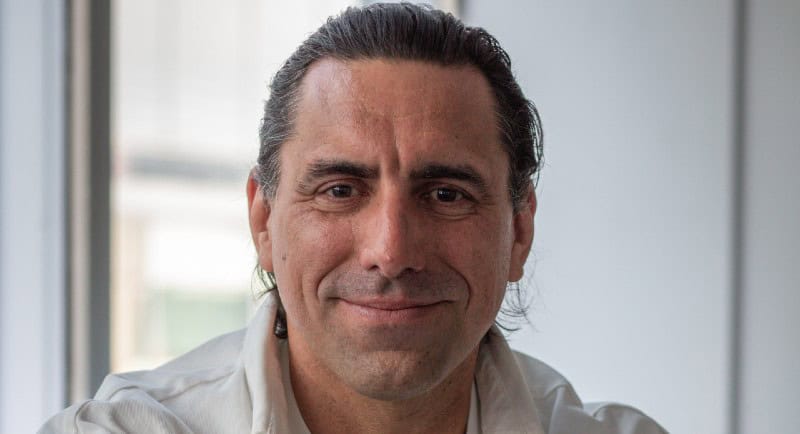
Clemenger BBDO appoints Adrián Flores as CCO
Clemenger BBDO has appointed Adrián Flores as chief creative officer. Flores will return to Australia for the role after over a decade in international creative leadership roles.
He replaces Jim Curtis, who left in September to become EVP, global executive CD at McCann New York.
Since CEO Dani Bassil returned to Australia after almost 20 years in the UK to lead the agency in 2023, and unite its Melbourne and Sydney agencies, she has made a string of senior appointments.
Anita Zanesco was named Clems’ first chief growth officer in July 2023, while Anita Deutsch-Burley and Georgie Winton became managing partners. Simon Wassef was appointed chief strategy and experience officer in September.
Bassil said that with the CCO appointment, “we now have a leadership trio of Aussies – Simon, Adrián, and myself – with deep experience across brand, digital and social, as well as global perspectives on the work and industry. We’re doing things differently, better, with more diversity, and challenging the status quo. That’s what these signings are about. We’re not just signalling an intention. We’re delivering on it.”
“When I left Sydney for the UK 20 years ago, I never dreamt an agency leadership team could be made up of three immigrant kids. Now, here we are.”
Flores, who was born in Mexico City and raised in Toowoomba, Queensland, most recently spent three years as vice president of creative at New York-based Robot, the brand consultancy arm of The SpringHill Company, a consumer and entertainment group co-founded by NBA star LeBron James and his business partner Mav Carter.
Previously, Flores spent time at Publicis New York and London, FCB New York, Marcel New York, and VaynerMedia.
“Clems is iconic both at home and abroad for a reason,” Flores said. “I’m extremely excited to be part of its next chapter alongside a truly world-class team that’s famous for making famous work.”
He will begin in the role on 20 May.
“I have no doubt Adrián’s energy, talent, and modern way of building brands will have a huge impact on our work, clients, culture and agency. I’m ecstatic he’s coming home to join the Clems family,” Bassil added.
See also: Clemenger Group launches industry-first Agri Graduate Program
–
Top Image: Adrián Flores
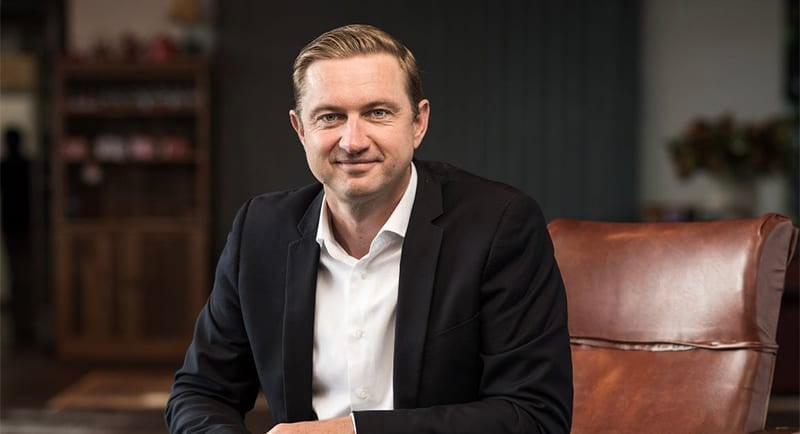
James Dixon on Atomic 212°'s 'big, hairy, audacious goal': Crack top 5, 'take on the big brands and win'
Atomic 212° has big ambitions: To crack the top 10 media agencies for billings this year, then the top five in the next three years. To keep retaining clients in a tough pitch market, dominated by “frustrating” procurement-led reviews. And to keep senior talent with long tenures, even as competitors attempt to poach them.
The independent agency‘s chief digital officer James Dixon has been with the agency for over 17 years. He joined in 2007, back when it was still Atomic Search. The core leadership team has similarly long tenures: among them chair Barry O’Brien‘s 10 years, CEO Claire Fenner‘s 10 years, and MD Rory Heffernan‘s 13 years.
Dixon hired Heffernan as a “wildcard”. He was working at Blockbuster, and has since progressed from SEO analyst to national managing director, “so I kind of use him as a reference to say everyone can achieve their best career here,” Dixon says.
Asked how Atomic has kept hold of so many key leaders for so long, Dixon tells Mediaweek the core group really feels like “family”.
“I think they belong – the senior team. We’ve had some come in and found it hard to adjust to the Atomic culture. There is a bit of a tribe that feels solid, with a kind of unspoken mission just to take on the big brands and win. That momentum gives a lot of those long termers no rationale to leave.
“I know that our senior staff do get headhunted and poached. Try to. But they genuinely reflect on the environment here and feel that it’s where they want to be. Had a couple of recent ones. And luckily, we talked them out of it. Their opportunities are obviously to go down the agency size ranks, which doesn’t appeal to most of our high performers, or go up, but then they’re put off by that global reality that they’ve either come from or hear about … the multinationals which don’t offer necessarily the same appeal, culture, values.”
Last month, the group went to Tasmania, hiking with AFL player Jack Riewoldt for three days. “It was a team bonding slash thank you slash legacy thing. How we’re gonna leave our legacies here.”
There is an opportunity to leave a worthwhile legacy at Atomic 212°, because it offers the best of both worlds, Dixon explains: all of the autonomy and agility of an independent, but with the scale to attract top talent and blue chip clients.
That client roster has remained stable too; Dixon references Origin, Bupa, and LendLease’s tenures of five plus years each. The product, too, has remained the same.
The tagline ‘Smarter, faster, accountable media’ has “always been in our roots, because we came through the performance background,” Dixon explains, “and that’s really come solidly into our doctrine and product proposal now. So I’m happy we nailed that years ago, and we don’t have to evolve it for the current market.”
The agency currently has offices in Sydney, Melbourne, Brisbane, Darwin, and New Zealand. Are there plans to continue expanding into other markets, or is the focus on scaling the existing outposts?
“The latter,” Dixon confirms. “Focusing on scaling Australia. We don’t have international ambition, other than New Zealand. I have noticed some of the other indies going that way, particularly Nunn in America and Akcelo … in Canada, so I’m always curious and envious of people that give it a go. But our missions are more Australia centric. We love this country. No immediate intention with other states.”
Ambitions: Crack the top 10, then the top 5
In the past few years, Atomic has “firmly actualised as the largest indie,” Dixon says.
“I think that was a big, hairy, audacious goal five years ago. And now it feels like we’re firmly there, if not heading to the next big, hairy audacious goal, being top five. We’ve got billings of $300 million now. Top five is $500 million. So potentially we can get there in the next three years.”
Last year, the agency was #11 in the country for billings, according to Comvergence, and brought in $43 million in new business billings, including Entain, My Muscle Chef, Victoria University, and Craveable Brands. Dixon is confident that this year, “we’ll do better.”
“I’m feeling momentum. We’ve had 20% annual growth for 10 years, so we’ve never really deviated far from that.”
The agency is currently busy on the pitch front – the days of specific pitchapaloozas might be over, because “it just feels like it’s pretty constant nowadays” – including the coveted federal government’s master media account, currently with UM: “we put our hat in the ring on that one.”
“We’re not active with any retention, it’s all new business.”
Pitching as the ‘wildcard indie’
Dixon explains that Atomic 212° is still shortlisted as the “wildcard indie” in pitches, “and then we seem to do quite well in that proposition.” Clients resonate with the culture, he believes, but there’s always some for whom it isn’t the right fit.
“I reflect on a couple of losses. NBN a couple years ago, and they wanted a corporate, process-driven, multinational, in my view, and they landed with one [the account went to Publicis’ Spark Foundry]. But where there’s a big brand that wants agile, passion, and commitment, I think that’s what we show. I don’t know what the multinationals show. I just have to guess that we’re somewhat different.“
Currently, there aren’t any category gaps the leadership team is eyeing off. “If you’d asked me a couple of years ago, I would have loved a big tech like a Canva or Salesforce. We were lucky enough to get Salesforce a couple of years ago and we’ve got some lovely large e-commerce clients. Pet Circle is a favourite of mine because they’re growing fast.”
‘It is frustrating that procurement feel the need’: Pitching as the incumbent
Amidst the new business wins, Atomic has also been on a retention spree – BMW – which led to the agency’s New Zealand expansion – plus the Northern Territory government and Tourism Northern Territory accounts. Earlier this year, it won back Northern Territory Major Events Company too, after losing the account in 2019.
It’s also added VetPartners, Adyen, and UKG to its roster in 2024. Dixon says the crew is “super pitch fit”, but “it’s a different emotion for sure” when you’re pitching to retain an account.
“You’ve done all this great work, you’ve had a great relationship, procurement have insisted, and marketing teams have to go, ‘guys, we’re sorry to have to do this, but it’s the three year process.’ And then we know we’re vulnerable. So we have to put our best foot forward.
“We’re lucky that always our client relationships are good and strong, and the proof points are there, but we know that the pitch will be competitive, the multinationals will go hard on price. And we’ve got some very enviable brands. So yeah, we don’t take it as a gimme, we have to go all in and reprove ourselves.
“I wish we wouldn’t have to do it. TrinityP3 do a good job of trying to break that cycle of things. It is frustrating that procurement feel the need to do it when it’s a good relationship. But they have to show that they have gone to market.”
AI as Dixon’s ‘happy place’
Dixon is having a great time doing “quite a lot of dabbling” in the AI space, especially media mix modelling.
“I am quite innovative, entrepreneurial, I want to jump onto it and leverage it for clients’ gain, for our agency’s gain.”
At an upcoming AI conference, he’s presenting a CMO chatbot, which allows marketers to ask how a campaign is performing this week, among other features. He wonders whether indies can keep up with the huge investment global holding companies are making in the tech, but he also doesn’t have to navigate the stricter, perhaps more conservative, holding company policies.
“There’s lots possible but it feels like businesses and even Atomic can’t change as quickly as the technology is evolving. Eventually, it’ll find its way into our workflows, maybe streamline things, particularly reporting and improve our reporting product. I believe it will, it will give our reporting more insights, more depth, more actionable insights for our clients.
“I’ve probably gone through my peak of expectation, I’m just getting into my trough of reality as to where it will land.”
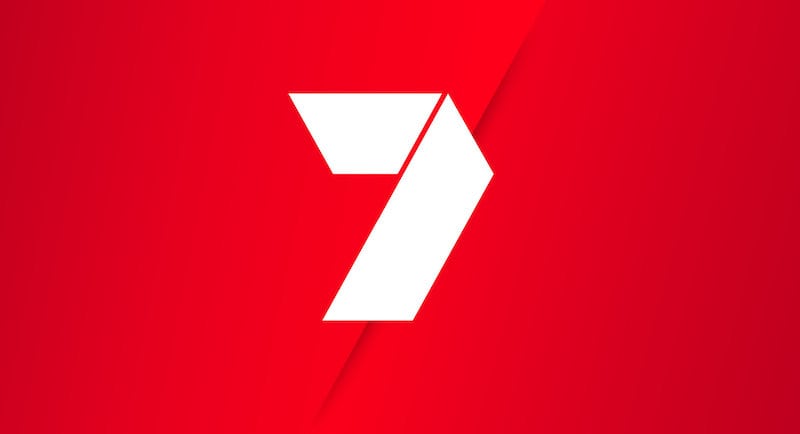
Shaun Menegola resigns from Seven Melbourne
Director of news at Seven Melbourne, Shaun Menegola, has resigned from the Seven Network, just weeks after director of news and current affairs Craig McPherson also departed.
Menegola’s departure date has not been finalised and he will remain in the role for a transition period.
“I have decided to call an end to my time here at 7NEWS in Melbourne,” Menegola said.
“It’s entirely my decision and one I’ve been thinking about for a long time. It’s not one driven by anything else other than the fact that I’m looking to take a break to recharge and reboot – and to spend some time in my home state [Western Australia] with family.
“I couldn’t be prouder of what this team has achieved over the last five or so years, and of the bulletins we turn out every night.
“It’s been a highlight of almost three decades running news bulletins and newsrooms.”
Anthony De Ceglie, McPherson’s successor as Seven’s director of news and public affairs and editor-in-chief said: “Shaun has made a remarkable contribution to Seven Melbourne and, before that, Seven Perth over many years and he will be greatly missed.
“He has been a driving force behind the success of 7NEWS Melbourne over the past five years and will leave a great legacy.”
Menegola’s successor is yet to be announced. Before this stint at Seven, he held roles at Nine and in the Premier’s office in Perth. He previously worked at Seven Perth from 2000 to 2011.
De Ceglie’s promotion was the first major appointment since new CEO Jeff Howard began in the role on 19 April. De Ceglie has been with SWM since early 2019, based in Perth, and will relocate to Sydney for the new role. His former role, leading titles in WA including The West Australian and The Nightly, is currently vacant, being filled by Chris Dore in the interim.
“It’s an absolute privilege and honour to step into one of the most important roles in news in the country, and to do such at such a pivotal and important time for our industry,” De Ceglie said.
McPherson stepped down after Seven’s Spotlight program became embroiled in Bruce Lehrmann‘s failed defamation battle against 10 and Lisa Wilkinson. In the wake of ex-Spotlight producer Taylor Auerbach‘s evidence, EP Mark Llewellyn also left the network.
See also: Seven promotes Anthony De Ceglie to director of news and current affairs

Bryden Campbell: Bonza's demise offers lessons for next budget airline
By Bryden Campbell, founder of Brand Rebellion
In our continued cost-of-living crunch, Bonza could – and should – have worked. Regional Australians want to see increased competition among airline carriers. People don’t want to be taken for a ride by the big brands. As consumers, we want choice and competition in essential industries, not duopolies (see: supermarkets).
So what went wrong? And what can other challenger brands learn from Bonza’s lessons?
Don’t compete with bigger budgets, just be smart in what you do
Bonza entered the market with a competitive price point and message. But while low fares can open the door, the trick is to find ways to retain customers while being financially sustainable.
By strategically allocating resources and capitalising on unique selling points, it is possible for challenger brands to carve out their niche in the market – but price can’t be your only USP.
Focus on quick wins
Challenger brands should counter regulatory costs with quick wins early on that can build public trust and recognition. Bonza did have some good wins on the board: as recently as March this year, it led all the other major airlines for on-time arrivals.
This punctuality narrative should have been pushed harder, especially in the wake of constant delays plaguing the other carriers.
Address customer needs with a compelling story
Bonza could have focused on communicating value beyond just low prices to attract and retain customers. This could include emphasising service quality, unique route offerings, customer experience enhancements, or loyalty programs that incentivise repeat business.
These messages would then be associated with the brand, which would allow it to change pricing strategies based on financial sustainability. Take Qantas’ Spirit of Australia, for example. This isn’t a promise on price, or even customer experience: it’s a feeling. Bonza needed to discover what it wanted its customers to feel, and sell that story through great storytelling.
Be different, but not to the brand’s detriment
Bonza’s initial approach of personifying its brand with names like Bazza, Shazza, and Sheila was aimed at creating an Aussie-friendly image and standing out from its more ‘serious’ competitors.
While this strategy can indeed differentiate the brand and add personality, it’s crucial to consider the long-term effects on audience perception, trust, safety, and brand flexibility. Brand identity should resonate broadly while still capturing the essence of the brand’s values and positioning.
Instead, Bonza could have amped up the theme of regionality in its primary messaging, for example, by charting different routes and mixing up deals to help sell seats.
If it was easy, everyone could do what Bonza set out to do. We should recognise that being a challenger brand in an industry with regulatory burdens is not for the faint-hearted. Moving forward, I’m confident there is space for another challenger airline to fill the gap in the market for regional passengers who want to vote with their wallets. They’ll just need to be willing to learn from Bonza’s mistakes.

Sunita Gloster appointed chair of Diversity Council Australia board
Sunita Gloster AM has joined Diversity Council Australia (DCA) as a director of the Board, and is set to succeed as chair following this year’s annual general meeting.
Current chair Ming Long AM’s term ends at this year’s AGM on 26 June 2024, at which point Gloster’s term as chair will commence. Gloster officially joined the board on Friday 3 May.
Gloster’s 30-year career spans media, marketing, technology, and sustainability. She is a non-executive director for UN Global Compact Network Australia, the principal sustainability initiative for businesses in Australia and Maurice Blackburn Lawyers.
She is also an advisor to Accenture and the co-chair of the Tech Council of Australia’s media and marketing committee. Gloster has also served as an advisor to UN Women Australia.
Gloster said of her new role: “DCA has long been the principal driver of policies and knowledge that have advanced diversity in Australia’s workplace. I’m honoured to be joining the Board and am committed to working with the Board and management team to make further progress in imbedding best-practice diversity policies and practices in our workplaces.”
Gloster was recognised as a Member of the Order of Australia in 2023 for her significant service to the media and marketing industry and gender equality.
Long, DCA chair, said: “Her broad experience, innovative thinking, and unwavering commitment to diversity and inclusion make her the ideal candidate to chair DCA into its next chapter.”
Lisa Annese CEO of DCA, added: “Sunita brings to the Board fresh perspectives cultivated across a breadth of sectors and we look forward to working with her to build on DCA’s achievements and continue driving progress towards inclusive and diverse workplaces.”
See also: Diversity Council Australia warns AI tools could “negatively impact” industry attempts to address diversity
–
Top image: Sunita Gloster
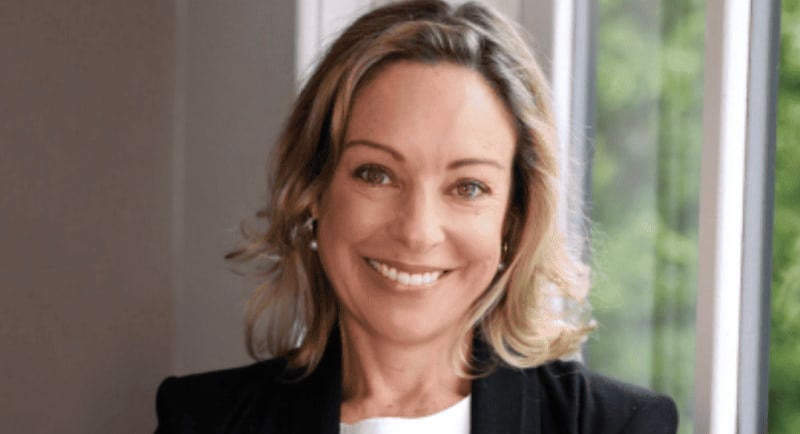
'Ads are seen as content': How Pinterest is attracting Gen Z as it achieves record growth
In its Q1 earnings report, Pinterest has recorded its highest quarter of user growth and revenue growth, surpassing half a billion users. Melinda Petrunoff, Australian country manager at Pinterest, told Mediaweek it is “an incredibly exciting moment for the business.”
Petrunoff puts the growth down to the improvements that the platform has made in relation to actionability and engagement.
“We’ve seen revenue growth hit a high for the two years since 2021, up 23% year on year,” she said.
“We have always been a platform for people to come and seek inspiration, but we’ve now made it so much more actionable. That’s never been more evident, particularly in Australia – clicks and saves on shopping ads have increased 130% year on year.”
Pinners are coming to the platform to get inspiration, and shopping on platform while they’re there. Petrunoff said advertisers are seeing high engagement, and improvements to lower funnel performance.
“We doubled our results on Q4, we’ve doubled it again year on year in clicks that we’re driving out to advertisers.
“On Pinterest, ads are seen as content. What we’re seeing in Australia is our users save ad content, because they are ideas and it’s absolutely relevant. That’s why we’re seeing that growth.”
It’s not just the lower funnel where Pinterest is seeing growth, either.
“We’re still very strong in the upper funnel, 97% of searches on Pinterest are unbranded. But we know users are coming to shop and therefore our responsibility is to fulfil that, to follow them and make it as seamless as possible.”
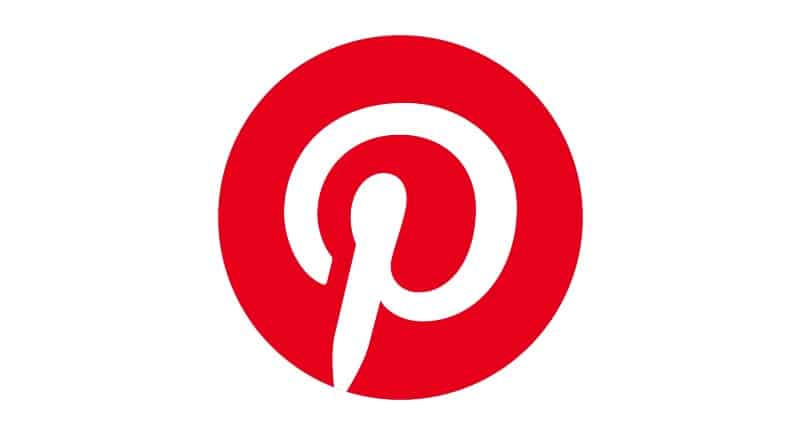
The growth of Gen Z
According to Petrunoff, what sets Pinterest apart form other social media platforms is the fact that people come to the platform with intent and with purpose – “that’s completely different to other social media platforms where people are leaning back and there to be entertained.”
There is one audience in particular that exemplifies this trend, with Gen Z rapidly signing up for the app to both seek inspiration and to take action.
“Our biggest cohort on platform is Gen Z. Globally they are 40% of our user base, in Australia, it’s 47%.”
It’s a unique situation for a social platform to be in: Gen Z is notorious for jumping on the latest trends, and lesser known for taking up established media. Founded back in 2009, Pinterest is bucking this trend.
“For a platform that is as established as Pinterest to now have a growing user base with the youngest generation is pretty incredible,” Petrunoff said.
“Pinterest has done a really good job at understanding what users want, and in a world where social media is so prevalent, being true to its values of being positive by design, and being inclusive.”
‘Unique opportunity’: Pinterest in Australia
“Australia is an incredibly important market for Pinterest,” Petrunoff said.
“Whilst Australia is a smaller population, we’re an incredibly wealthy market from an ad market perspective – that presents a really unique opportunity.
“The way Australian Pinners behave on platform is very similar to our other markets around the world, which means we know the products that we build and release are going to resonate and provide a fantastic user experience.”
See also: Why Pinterest’s Melinda Petrunoff says that “it pays to be positive”
–
Top Image: Melinda Petrunoff
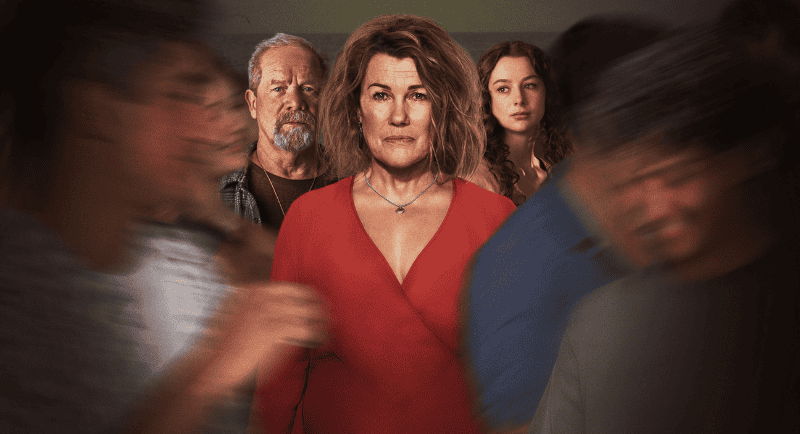
Robyn Malcolm talks to TV Gold about After the Party and her pissed-off character Penny
The New Zealand drama After the Party recently launched on ABC TV. A special bonus episode of the TV Gold podcast featured an interview hosts Andrew Mercado and James Manning had with co-creator and co-star Robyn Malcolm.
The series is being called one of the best New Zealand dramas ever. Also one of the best dramas to be screened in Australia this year.
Below are highlights of just part of the 30-minute interview. Listen to the TV Gold episode for the full unedited discussion. Malcolm has already won an international award for her part in the production. More are sure to follow.
Robyn Malcolm: The interview
Tell us in your own words about the plot of After the Party. It takes a little while for the viewer to work out what’s going on.
After the Party is a story about a divorced woman in her late 50s who is living a pretty singular life. She’s a science teacher, kind of pissed off with a lot of the world. She’s an environmental activist. She lives on her own. She’s got a daughter she doesn’t see much. And a grandson.
We find out through the first episode, that five years previously, when she was still married, she caught her husband during a party in bed with a young boy. She accused him of the sexual violation of a minor and did it publicly. You discover how it blew their lives apart, and her husband left town. He couldn’t stay in anymore because it ruined his life.
Five years later, which is where the bulk of the story it set, he returns. He does that because he wasn’t arrested, he wasn’t convicted. When he returns, it just opens everything up again and it becomes the story of who believes who? Did he really do it? Or didn’t do it?
We didn’t want to tell a simple story didn’t want to tell a linear story. We wanted to tell a story that was about the sort of the emotional complexity of family and marriage.
The story itself came from Diane Taylor, who is a film writer in New Zealand.
She wrote a film that I auditioned for. The central female character was in her mid-50s. I was on the shortlist until the director said, ‘No, I don’t want her and cast someone 20 years my junior.’
Women of a certain age
Di and I then started talking about the whole notion of aspirational casting, which seems to happen where women of a certain age can’t be played by women of a certain age. Apparently, the audiences want them to be played by somebody younger. That’s the way certain producers seem to see the world.
We talked about what it was that made middle-aged women unpalatable. We thought let’s write a really unpalatable middle-aged woman. Put her up a tree and throw rocks at her and see what happens.

Production Stills. After The Party. Wellington, New Zealand. Photo: Marc Weakley/Cereal TV
Sending a message to TV executives
Your character is a life model who poses nude. Is this part of a visual message you’re sending to those TV executives who don’t cast an older woman? Women can still be beautiful in their 50s, which you are.
Why thank you. We find older bodies, men and women, but in particular women, really difficult to look at. Why is it not considered beautiful? Because of the sexualisation of them, I think. Because so many women in their 50s talk about becoming invisible. People of all ages, physically, without their clothes on, are incredibly beautiful.
The place where Penny is at her most visible is as a life-drawing model. It came from my experience. I was a life drawing model when I was 19 to get myself through drama school. I did it because I didn’t like my body very much. Sitting in a room where people just looked at me objectively and without judgment, because they were drawing me, was one of the most amazing healing experiences I’ve ever had.
Robyn Malcolm’s co-star
Tell us about casting Peter Mullan as your husband Phil.
I met Peter when we did Top of the Lake together. We’ve been great friends ever since. He and I worked together again on a Christian Bale film called Hostiles in America. We’ve stayed in contact and stayed mates. He’s always been someone that I’ve gone to for advice.
When we were writing After the Party I was in conversation with him on and off. At one point I just asked would you be in it? He said yes, if the scripts are good enough.
I sent him a script, and he indicated it was not good enough yet. He said, ‘If you get this right, it’ll be an award winner.’ We made it better and sent it to him again. He went, ‘I’ll do it.’
Making After the Party
What have you learnt also being on the other side of the camera on After the Party? Has it changed the way that you’re an actor?
Absolutely, completely. I have a far greater empathy and respect and understanding of the production side of things. While I’m busy being an actor there are 100 people behind the cameras problem-solving. Peter put it well recently. We were at Series Mania in France a couple of weeks ago. [Robyn Malcolm won a Series Mania Best Actress award for After the Party.] Peter did a masterclass. He said acting’s like sex. Writing and directing and making something is like bringing up a baby.
Tell us about the shoot for After the Party.
We chose to film it in Wellington because Wellington is an unspeakably beautiful town and it’s a town that doesn’t get shot a lot. Most [New Zealand] drama gets shot in and around either Queenstown or Auckland. We chose Wellington because we wanted to put Penny and all the characters in a smaller city that felt like a small seaside community but wasn’t.
The terrain is tricky. She cycles everywhere up and down hills. Wellington is one of the windiest cities in the world. We wanted to put Penny in the wind. The great challenge for us was, because of climate change, the weather in Wellington is getting better and better and better. We had day after day after day of beautiful, calm, amazing weather. I really fell in love with Wellington big-time shooting it down there. It was magnificent.
Listen to the complete unedited TV Gold interview here.
Episode guide: After the Party
All episodes are available to download on iview. Warning: Below episode synopses include spoilers.
Series Overview
Penny’s world implodes when she accuses her husband Phil of a sex crime against her daughter’s teenage friend, and nobody believes her. Five years later, he returns from Scotland and moves in with Penny’s daughter Grace and grandchild. Grace begs her to put the past behind them, but when Phil takes up a teaching position Penny is again compelled to prove his guilt, reopening barely covered wounds in those around her and causing Grace to cut her out of her life. An increasingly alienated Penny is forced to choose what’s more important – the truth or her relationship with her daughter.

Penny (Robyn Malcolm), Bridget (Mia Blake)
Episode 1
Penny’s world implodes when her ex-husband Phil moves back to town. Five years ago, Penny accused him of a sex crime against her teenage daughter’s friend. Nobody believed her and Penny was ostracised from her friends and family. Penny’s now adult daughter Grace wants to welcome Phil back and have him move in with her and her three-year-old son, but Penny feels like she is losing the only family she has left. She takes her frustration out on a dodgy local fishing operator, staging a one- woman guerrilla attack on their boat.

Phil (Peter Mullan), Grace (Tara Canton), Penny (Robyn Malcolm)
Episode 2
Penny’s friends counsel her to put the past behind her, for the sake of her relationship with Grace and her grandson. But Penny is struggling with Phil’s return and despite her attempts to play happy families, she causes an argument at Walt’s birthday party. When Phil takes a high school teaching job, Penny tries to warn the principal of the school but is dismissed. A sneaky attempt to dig up more about Phil’s years away leads Phil to warn her to back off, or risk losing Grace and Walt. Penny takes her friendship with Simon too far.

Penny (Robyn Malcolm), Simon (Dean O’Gorman)
Episode 3
Spurred on by the news that Phil will be selecting boys for a basketball camp, Penny at-tempts to find Ollie and persuade him to expose Phil. But Ollie denies that he was a victim of Phil’s and rejects Penny’s pleas outright. After the death of her mother, Penny feels like an outsider in her own family and seeks solace with Simon, which pushes their relationship into dangerous territory. A new accusation against Phil is revealed.

Ollie (Ian Blackburn), Phil (Peter Mullan), Grace (Tara Canton)
Episode 4
Grace is terrified that Phil will leave again when an anonymous accusation is revealed. Grace accuses Penny of being behind it. Penny takes it as proof she was right and steps up her campaign against Phil. Ollie resurfaces to rekindle his friendship with Grace, but she is hesitant. Grace finally confronts Phil for leaving her years ago and he agrees he will stay and fight this time. Grace cuts Penny out of her life and tells Ollie they can’t be friends.

Penny (Robyn Malcolm)
Episode 5
Penny gets the graffiti perpetrator to report his story to the police, but it does not go as planned and severs another friendship for her. Simon and Penny bring their affair to an end, but not before Bridget has already formed her own suspicions. Penny is stood down from her job after publicly attacking another parent. Humiliated, isolated and broken, Penny is finally visited by Ollie, who enlightens her on the effect of her actions and the truth about Phil.

Penny (Robyn Malcolm), Tom (Elz Carrad)
Episode 6
Penny attempts to apologise to Grace and Phil but learns they are moving to Scotland. When Ollie goes missing, she asks Tom to look but doesn’t realise what this really means for Tom. Penny makes a new discovery and finally sees what was under her nose the whole time. At her farewell party for Grace, Penny’s relationship with her daughter finally begins to heal, but only because Penny’s suppressing what she now knows is the truth.
Production notes
After the Party is a Lingo Pictures & Luminous Beast production filmed on location in Wellington, New Zealand. Lingo Pictures’ Helen Bowden produced the series alongside Liz DiFiore and Peter Salmon with Salmon also directing all six episodes. Executive Producers are Lingo Pictures’ Jason Stephens, with Dianne Taylor and Robyn Malcolm.
Read the weekly Mercado on TV column in Mediaweek. Andrew’s review of After the Party.
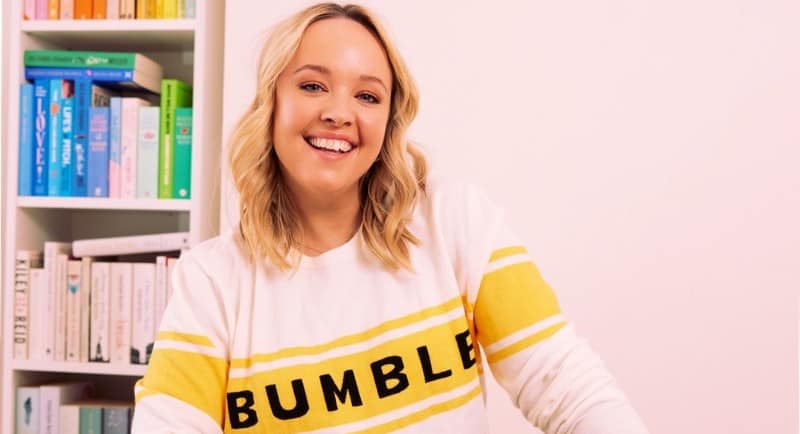
Bumble rebrand the first step to make dating better for women: APAC's Lucille McCart
Bumble, the women-first dating app, has unveiled a brand identity overhaul, including a new app identity, to herald in its second decade, promising a new era of better dating for women. The campaign and app refresh were both led by Bumble’s in-house creative studio.
Part of the rebrand was an expansion of the app’s Make The First Move functionality with the launch of Opening Moves – an option for users to set a question that their matches can respond to.
Locally, Bumble’s APAC communications director, Lucille McCart, told Mediaweek that “our creative is focused on how the new Opening Moves feature will help women in Australia and New Zealand find meaningful connections and have fun while dating.”
The ANZ launch was supported by a fully integrated campaign, she said, “including large and small format OOH, BVOD, TikTok, Meta, YouTube, Pinterest and audio.”
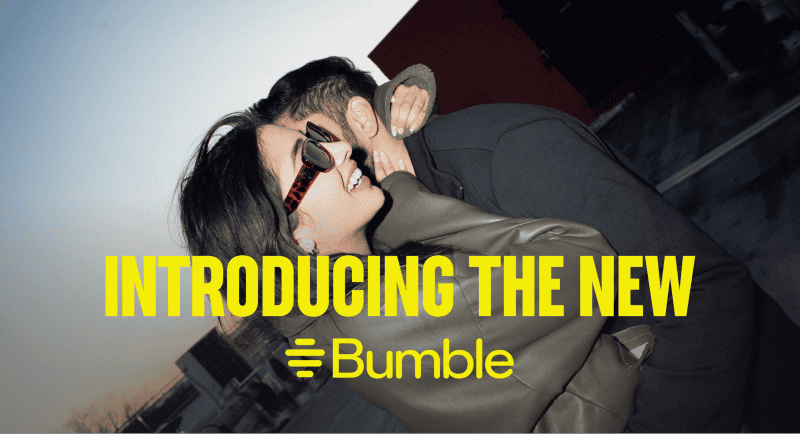
According to McCart, the decision to revamp the brand was driven by Bumble’s global research that found 75% of women say the look and feel of a dating app is important to their overall experience, while 65% say that the visual identity of a dating app can make it easier to use.
“By updating our brand look with a bolder yet simplified design across the app, it helps us usher in the next era of making dating better for women,” she said.
McCart explains that since Bumble launched in 2014, the dating world has changed significantly, with this latest iteration a reflection of the app’s community’s most recent feedback, “and it’s the first of many exciting updates we are making to address our community’s needs, and make dating better for women, both online and offline.”
She continued: “We know that women want to have control over their experience but we’ve also heard that women feel like they are doing all of the work on Bumble. So we’re introducing new ways to make the first move which offers more choice in how women connect while staying in control.”
Leading up to the launch, a mini teaser campaign drew on Renaissance imagery, playing off themes of weary women, recognising the apathy many feel towards online dating. This was broadcast via AR, short-form content, projection mapping of the ads onto landmark locations, and social media memes.
The final, global campaign announcing the brand and product evolution was centred on the hero messaging: “We’ve changed so you don’t have to.”
The campaign involved a marketing mix of high-impact digital and physical out-of-home (OOH), as well as a film that positions Bumble’s women-first approach as an antidote to the exhaustion experienced by some women towards the modern, online dating world.
Despite the changes, McCarty stated that “our core mission remains the same – women have always been at the centre of our experiences. This evolution isn’t taking the control away from women, but rather giving them more choice and control in how they make the first move.”
Bumble’s chief marketing officer, Selby Drummond, added that “with this new global campaign, we wanted to take a fun, bold approach in celebrating the first chapter of our app’s evolution and remind women that our platform has been solving for their needs from the start.”
–
Top Image: Lucille McCart
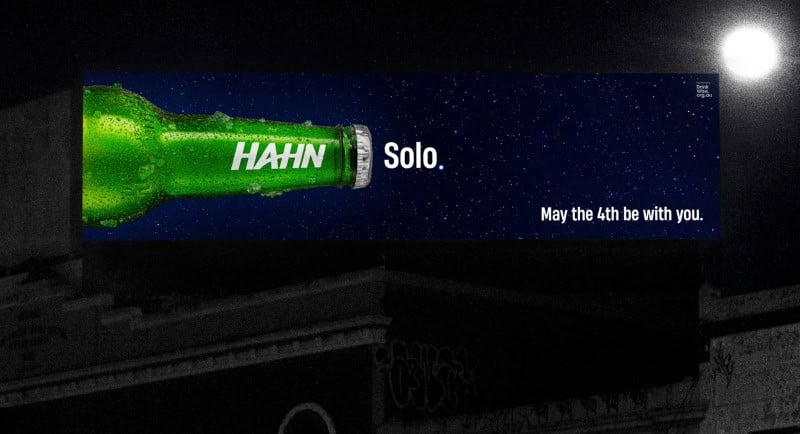
Thinkerbell celebrates Star Wars Day with Hahn Solo
To celebrate International Star Wars Day on Saturday 4 May – “May the fourth be with you” – Thinkerbell launched a digital out-of-home (OOH) activation for Lion’s Hahn Brewery: Hahn Solo.
The Han Solo pun was deployed by the creative agency in collaboration with media agency UM and digital agency Affinity across Sydney, Melbourne, and Adelaide, and broadcast digitally through its social channels.
It’s the latest work in a run of responsive OOH for Thinkerbell, including a Toohey’s ad welcoming Travis Kelce to Australia. Last month, Thinkerbell and Lion launched a mid-autumn campaign for XXXX Summer Bright Lager to highlight the versatility of the brew for any season. The work was informed by the insight that, compared to most other places, the Australian climate can still be loosely categorised as different shades of one season: summer.
The Summer Bright Ice Bucket Hat supporting the campaign is a hat that, when flipped upside down, becomes a fully functional, beer cooler.
See also: XXXX is ‘summer beer you can drink all year’ in latest from Thinkerbell
Currently, the retail drinks and hospitality business, Endeavour Group, is pitching the creative account for its key brands, including BWS and Dan Murphy’s. Thinkerbell is the incumbent for the latter. Endeavour recently completed a closed EOI process involving both current and potential agencies, in search of a single, leading creative agency.
The incumbent for BWS is M&C Saatchi, which has held the account since its appointment in 2021. It is understood M&C was cut from the pitch last week.
Thinkerbell last worked on the Dan Murphy’s brand in December 2022 with a festive tale about the life of the liquor retailer’s founder, Daniel Francis Murphy, commemorating the store’s 70-year-long contribution to Aussie Christmas celebrations.
See also: Endeavour Group pitches creative for key brands
Credits:
Client: Lion
Creative, earned: Thinkerbell
Media agency: UM
Digital agency: Affinity
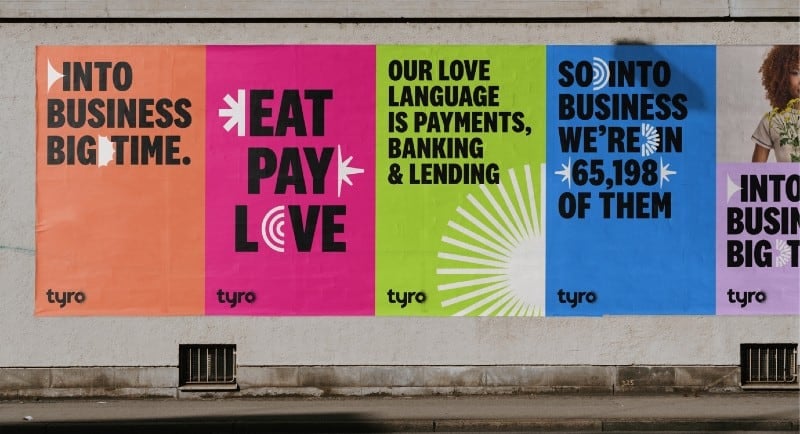
Howatson+Co launches first work for Tyro
Australian payments company Tyro has unveiled a refreshed brand identity along with a brand campaign launched via Howatson+Company: Into business big time.
The work is the agency‘s first for Tyro since being appointed its creative and digital media agency of record in late 2023.
Launching with three films, directed by Scoundrel’s Carl Sundem, the campaign plays on how industry-obsessed Tyro is about its customers, and the bespoke solutions it offers to support Aussie merchants in running and growing their businesses.
The campaign will run across TV, BVOD, billboards, audio, digital, YouTube, social and brand activations.
Tyro’s head of marketing, Sera Awad, said that at Tyro, “we’ve been obsessing over Aussie businesses for the past 21 years.
“We continuously strive to innovate in the payments space and ensure Aussie businesses are set up for success, and we needed a brand refresh that encapsulates the obsession that Tyro has for these businesses every day.”
Stephanie Brown, Tyro’s head of brand, added that in the new work, “we see how Tyro has literally built its business around Australian businesses. We couldn’t be more thrilled to have partnered with Howatson+Company and Frontier Media to bring it to life.”
Richard Shaw and Jeremy Hogg, Howatson+Company’s executive creative directors, said that “the most exciting thing from the outset of our partnership with Tyro is that they weren’t just looking for an ad campaign. Sure, that was part of the requirement, and we love the tone we’ve created, but we needed a bigger positioning statement to re-align the business around.
“For us Into business big time is an engaging proposition both internally and a real consumer benefit that’ll allow us to do great things.”
Howatson+Company’s chief media officer, Sasha Smith, added that “we’ve mirrored this obsession throughout the media strategy, which targets specific, business-friendly environments throughout the funnel, truly bringing message and moment together.”
Last last month, Kenny Hill sold his Melbourne-based creative agency Akkomplice to the three-year-old indie founded by Chris Howatson, 10 years after Hill left his post as managing director at M&C Saatchi Melbourne to launch the agency.
See also: Howatson+Co acquires Akkomplice: ‘It was a natural fit’
Credits:
Client: Tyro
Head of Marketing: Sera Awad
Head of Brand: Steph Brown
Brand Manager: Justine Duffy
Brand and Communications Executive: Leo Lovric
Senior Campaigns Manager: Isabell Schneider
Digital Marketing Manager: Pramesh Singh
Marketing Campaign Manager: Matt Gregory
Senior Designer: Scott Elliott
Senior Copywriter: Max Kitchen
Designer: Max Khoun Ala
Creative: Howatson+Company
Group Managing Director: Renee Hyde
Group Strategy Director: Clinton Duncan
Executive Creative Directors: Richard Shaw, Jeremy Hogg
Creative Directors: Simon Friedlander, Michael Kleinman
Head of Production: Holly Alexander
Senior Producer: Nat Greaves (Photography)
Head of Craft: Ellena Mills
Senior Designer: George Coltman
Group Business Director: George Robertson
Business Director: Gavin Blomeley
Business Manager: Rachael Baulderstone
Media strategy + Digital media buying: Howatson+Company
Chief Media Officer: Sasha Smith
Head of Media: Daniel Dall’Acqua
Digital Director Search: Anthony Damiano
Digital Director: Bill Luu
Digital Managers: Shannen Ciar, Jeffy Thomas
Media buying offline channels: Frontier Media
Managing Director: Daniel O’Brien
Head of Client Service: Nichola Kiely
Senior Account Manager: Alex Kottas
Post House: Heckler
Editor: Michael ‘Hooli’ Houlahan
Colourist: Fergus Rotherham
Online: Julian Ford, Drew Downes
Compositor: Troy Darben
IO: Dan Page + Liam McConville
Producer: Jess Walley
Music + Sound House: Mosaic Music & Sound
EP: Bill Doig
Head of Creative: Adam Moses
Sound Engineer: Michael Thomas
Photography: Pool Collective
Photographer: Sean Izzard
Executive Producer: Courtney Lewis
Producer: Zoe Izzard
Lead Stylist: Jo Ayling
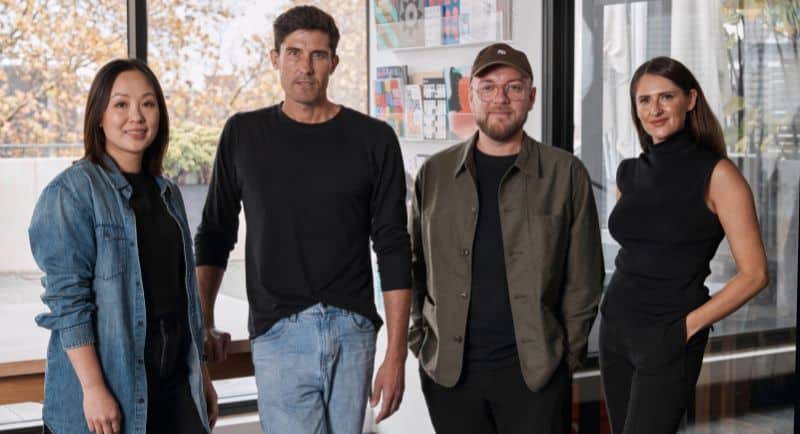
Houston nabs Interbrand's Alex Creamer and Nike's Michelle Teh
Houston has appointed Alex Creamer as creative director and Michelle Teh as design director, strengthening the brand strategy and design consultancy’s creative offering.
Creamer spent the past six years with Interbrand, most recently as creative director. He also spent four years at RE as a senior designer.
He has helped reshape some of Australia’s biggest brands, including Mcdonald’s, Sydney Fish Market, Optus, Westpac, Federation Square, and graphite pencil-winning NextSense.
Creamer said of his new role: “In a rapidly changing world, clients are actively seeking new ideas and experiences to solve their business challenges. Hence my excitement in joining an agency with such strong momentum and a renowned creative culture.”
Teh brings more than 14 years industry experience gained from roles in London, Amsterdam, and Sydney to Houston. She joins from Nike Brand Creative’s European Headquarters after nine years. She played a pivotal role in shaping brand experiences and storytelling within the brand’s retail fleet across the EMEA region.
Before joining Nike, she worked for multiple brand and customer experience agencies in Australia and overseas and recently spent time tutoring design at the University of Technology, Sydney, mentoring the next generation of creative design specialists.
Teh said of joining Houston: “I have a true passion for my craft and am committed to designing meaningful narratives and memorable brand experiences for clients. I can’t wait to get stuck in and bring this mindset and commitment to Houston’s clients.”
Creamer and Teh report directly to ECD Alex Toohey. He said both their appointments bring “perspectives and energy to our already formidable creative team, and we are very excited to start working with them both.”
“Alex’s love for all things brand and experience coupled with Michelle’s expertise in global identities and branded spaces will add depth and fresh thinking to the agency as well as bolstering our creative leadership team.
“Alex and Michelle’s skillset bolsters Houston’s strong offering across the brand design spectrum, but more than that they are genuinely fun people to have around and will no doubt add some big energy to our team. I am looking forward to seeing them thrive here and creating some remarkable creative solutions for our brand partners.”
Stu O’Brien, CEO and founder of Houston, added: “As Houston looks to offer its clients best-in-class creative thinking, I believe we have found phenomenal talent in both Alex and Michelle. Their experience reshaping some of the world’s most well-known brands makes them unicorns in this market and I am delighted to welcome them to our team.”
See also: Meeting of the Minds: Bard Barber and Tori Fraser from Houston
–
Top image: Michelle Teh, Alex Toohey, Alex Creamer, and chief of staff Stacey Saunders
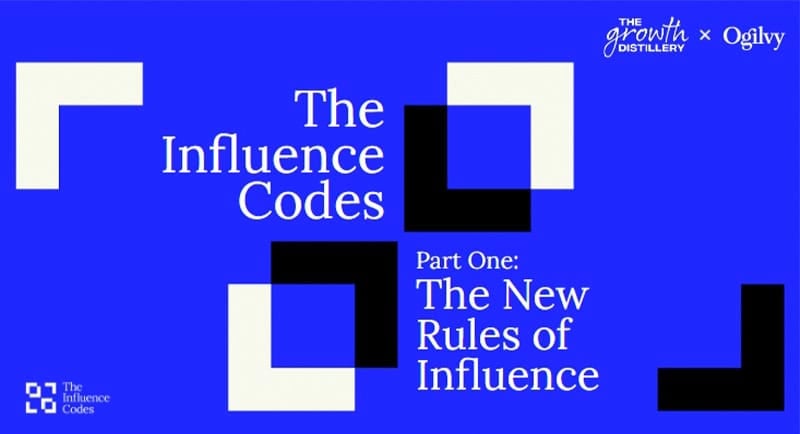
Growth Distillery, Ogilvy, and Kantar partner for influence research
The Growth Distillery has partnered with Ogilvy and Kantar for the release of The Influence Codes, a research and insights program into what, exactly, creates influence.
The research proves that “a large portion of what the marketing industry believes is effective is categorically wrong,” Ogilvy Network AUNZ’s consulting, growth, and innovation lead Toby Harrison said.
“We now have a genuine and comprehensive understanding of what creates influence and how that power can be leveraged by marketers to deliver effective growth.”
The Influence Codes is based on six months of research, and looks into shifts in technology, society, and globalisation that impact what influence means, and covers how brands can navigate these changes.
The research was undertaken after consulting a panel of experts from the media, social media, gaming, consumer psychology, and legal worlds, as well as corporate leaders and political strategists. Over 9,000 Australians were interviewed across more than 20 scenarios.
The Influence Codes will explore four key categories in 2024: travel, food, health and retail. Findings will be released over the coming months.
The research found 71% of Australians feel the world around them is more complex and less trustworthy. The research also revealed affinity – a combination of character, proximity and relatability – is the new foundation for influence.
Punters who attended News Corp’s 2024 Frontiers received a sneak peek at the data earlier this year, with director of The Growth Distillery, Dan Krigstein, telling the room. “The higher the cognitive load, the more important affinity is going to be influencing your decision or your consumers’ decision.”
“This is really interesting because it’s counter to the conventional marketing knowledge.
“You’re taught to find those moments of least resistance, find the troughs in the cognitive load and that’s where you put your message. What we can tell you is it’s actually the opposite.”
See Also: Brands’ job not to ‘build trust, but to break cynicism’: News Corp’s 2024 Frontiers
Head of research at The Growth Distillery James Taylor said there were three key takeaways the team wanted to share with brands.
“Firstly, we unpack how the traditional codes of influence have been disrupted, with the decline of traditional authority and the rise of affinity as the new cornerstone of influence.
“Secondly, we explore what’s caused this disruption through a deep dive into four seismic shifts: information overload, codeless culture, declining institutional trust and choice fatigue.
“Finally, we provide guidance on how to apply the new rules of influence including how to use the ‘goldilocks zone’ of affinity marketing, showing up in high cognitive load environments, how tone of voice creates affinity and applying the six archetypes of influence.”
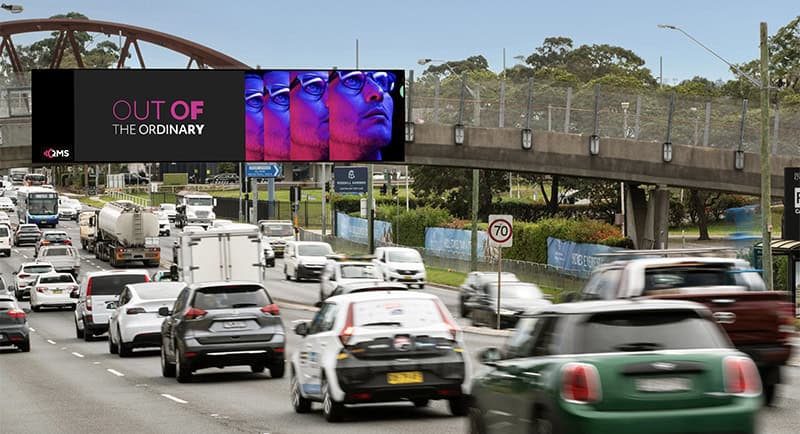
QMS expands Sydney network with Australian Turf Club deal
QMS has signed a new agreement with the Australian Turf Club to manage key assets at Sydney’s iconic Rosehill Gardens Racecourse, in an expansion of its existing NSW network.
The agreement takes effect on 3 June 2024, and covers six locations along James Ruse Drive, including two double-sided monopoles and a double-sided overbridge.
Located between Parramatta and Sydney Olympic Park, QMS said the new digital Rosehill Garden locations provide advertisers with access to the western Sydney growth corridor that reaches young mid-to-high income households.
Each year, Rosehill Gardens holds 25 race meetings, and is home to both the $5 million TAB Golden Slipper in March and the $10 million James Squire Golden Eagle in November.
The new agreement is part of the ongoing strategic expansion of QMS’ NSW network, which includes the City of Sydney premium digital street furniture network.
In the past year, QMS has added more than 10 new billboard locations in Sydney, including the Australian Rail Track Corporation’s out of home assets in Sydney.
QMS chief operating officer, Sara Lappage, said QMS was thrilled to be working with the Australian Turf Club for the first time.
“Rosehill Gardens Racecourse is a vibrant lifestyle and entertainment destination, and these new premium digital billboards will further enhance our expanding Sydney network, allowing advertisers to gain even greater reach of a growing and influential western Sydney audience.”
Australian Turf Club head of commercial, Donna Forbes, said the team is looking forward to working closely with the team at QMS to develop new opportunities for key locations at one of the most iconic racecourses in Australia.
“QMS has a proven track record of market-leading digital innovation, bringing data and technology together to deliver audience led insights that deliver real results. We know they will be a great partner and will make a significant impact on our business,” she said.
See Also: QMS nabs Sean Rigby as national trading and partnerships director

National Breast Cancer Foundation appoints VML
The National Breast Cancer Foundation (NBCF) has appointed VML to create a future-focused, connected marketing and customer experience strategy for the non-profit.
Bringing together teams from Melbourne, Sydney, and Perth for the first time, the appointment marks one of VML’s first endeavours since its formation at the end of last year, following the merger of legacy powerhouses VMLY&R and Wunderman Thompson.
Working in partnership with NBCF, VML said it will craft a new audience-centric approach to its marketing strategy. The collaboration will involve creating a unified view of NBCF’s audiences and value propositions, mapping audience journeys, developing an implementation plan, and exploring operational enablers for the ongoing success of future campaigns.
Andrew Bachelard, director of digital technology at the NBCF, said, “the alignment of VML’s innovative spirit with our vision of Zero Deaths from breast cancer is a powerful combination.
“Through NBCF’s strategies we aim to fund more world-class research to help reduce the 3,200 lives lost each year as a direct result of a breast cancer diagnosis in Australia.”
Johan Borg, VML’s chief growth officer for Australia and New Zealand, said the agency pulled out all the stops when it received the invitation to respond to NBCF’s marketing challenge.
“It’s not every day you get the chance to make a real difference for the lives of thousands of people and it was wonderful to see our teams come together instantaneously for the purpose of the task at hand,” said Borg.
In late April, Cancer Chicks launched a brand platform and campaign, FUCC It, via Mediabrands Content Studio (MBCS) and Initiative’s purpose-led consulting division, Initiative IMPACT. The campaign aims to liberate young women living with cancer, while encouraging Australians to keep the conversation going in support of young women dealing with the disease.
Around the same time, VML Auckland launched its latest campaign for the Ford Everest SUV, Conquer the Weekend.
See also: Cancer Chicks launches ‘FUCC IT’ via Initiative IMPACT and MBCS
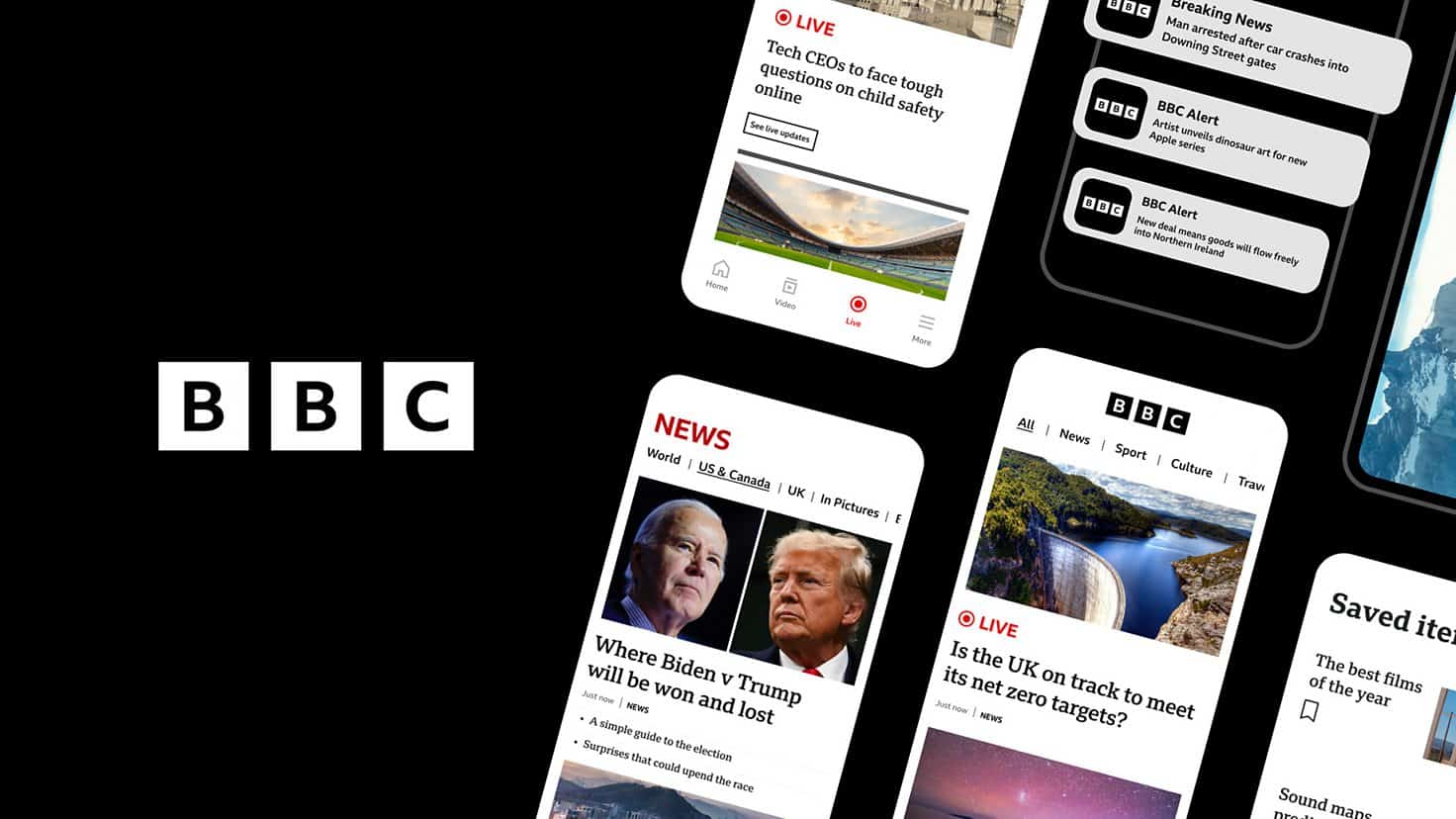
BBC launches unit to counter disinformation ahead of 2024 US Election
In preparation for the 2024 US Presidential Election, the BBC will launch BBC Verify US, a dedicated unit to counter disinformation.
The new US unit, based out of Washington D.C., will use a range of forensic investigative skills and open-source intelligence capabilities.
Jamie Chambers, vice president, advertising and BBC news distribution, ANZ at BBC Studios told Mediaweek that the US election is one of the biggest stories of the year, and resonates in Australia.
“Our expanded presence in the US and our breadth of coverage means that the BBC is perfectly placed to connect these events with our Australian audiences,” he said.
“We know that Australians turn to the BBC at times of global importance, and these are also key moments for advertisers across our platforms.
“Brands can safely capitalise on these unique levels of engagement thanks to our developed approach to brand safety, that leverages rigorous editorial controls together with smart technology.
“Combined with the newly launched BBC.com and BBC app products, audiences and advertisers will benefit from an enhanced and more integrated experience when following this key story.”
During the 2016 US Election, Australians were looking for US election results at twice the rate than Australia’s own election on Google. At the last US election in 2020, BBC.com saw over 3.7m unique visitors for its US Election coverage.
Led by Ros Atkins, BBC News’ analysis editor, the BBC Verify US coverage will be digital-first as the team will examine videos, analyse data, and distil complex stories to uncover the truth.
In Australia, the BBC News channel is available on Foxtel, Fetch and Flash. The channel’s chief presenters Caitríona Perry and Sumi Somaskanda will anchor the BBC’s coverage stateside as well as host conversations and insights into foreign policy and the global consequences of major election moments.
Senior journalists Helena Humphrey and Carl Nasman will report from across the US, giving audiences an inside look at the issues impacting the election. The channel will also feature work by the BBC Verify US team.
See also: BBC First landing on Sky NZ in October 2024 for lovers of premium drama

Principals launches brand identity for NSW's Digital Birth Certificate
Principals has created a brand and communication framework for the newly launched digital birth certificate.
Digital birth certificates are now available in NSW via a pilot program that will see parents and guardians across 227 early childhood education centres invited to trial the technology.
The new technology is being delivered by the NSW Registry of Births, Deaths and Marriages, supported by the Department of Customer Service.
Principals worked with the product team under the NSW Department of Customer Service to develop the value proposition and brand architecture for digital birth certificates, as well as a communication framework, brand identity, toolkit, and launch campaign assets.
Principals business director Renée Stekel said: “We evaluated messaging and visual stimulus through a test-and-learn approach with a diverse range of Australians. The result is a vivid, bold look and feel for the digital birth certificate.”
The intentionally minimal colour palette is inspired by the physical design of the birth certificate with a nod to Australian green and gold tones. The holographic qualities of the digital birth certificate were used as inspiration for the campaign background treatment.
Principals stated that a bold and simple type style allows for legible and clear communication of campaign headlines and messaging across all applications.
NSW Department of Customer Service national products and program delivery director, David John, said: “The greatest challenge ahead is how we convince businesses and governments to move away from their reliance on traditional forms of ID and, conversely, how we get citizens to embrace a digital ID before they are widely accepted.
“In addition to getting the word out, strategic partnerships and user-centric design are crucial to achieving our mission.
“Our partnership with Principals has enhanced our capabilities in these essential areas making them an integral part in the development of digital birth certificates.”
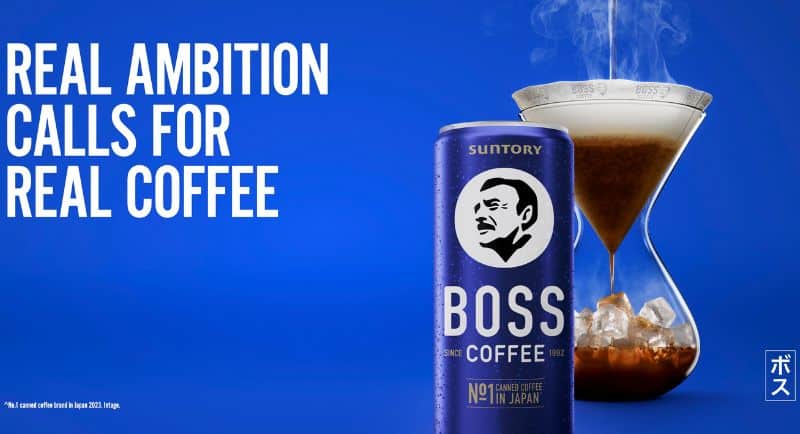
Suntory BOSS Coffee launches campaign and visual identity via It's Friday
It’s Friday has launched a new brand campaign for the Japanese canned coffee brand, Suntory BOSS Coffee.
Ambition is, the brand’s new tagline, positions Suntory BOSS Coffee as the beverage to help fuel busy work days with a convenient flash-brew coffee experience.
The campaign includes a new brand visual design identity, drawing inspiration from Japanese craftmanship and the principle of ‘Kanso’, or simplicity.
It centres around the unique Japanese ‘Flash Brew’ method, in which coffee is brewed hot and chilled fast to deliver a rich taste.
Amy Hiscock, head of Suntory BOSS Coffee Marketing, Suntory Beverage and Food APAC, said: “Suntory BOSS Coffee is proudly the number one canned coffee beverage across Australia and New Zealand. When we introduced the product into the market two years ago with our ‘How Japan Can’ campaign, it was important that we raised awareness of the category and focused on our Japanese heritage.
“The new campaign ‘Ambition is’ and updated visual identify, developed with the team at It’s Friday allows us to continue to hone in on our heritage but also dial up the quality and taste experience to inspire a Boss Coffee experience at any time during the work day. Suntory BOSS Coffee is real, rich-tasting, flash brewed coffee, all in the convenience of a can.”
Vince Lagana, CCO and co-founder at It’s Friday, said: “In this first iteration of the ‘Ambition is’ campaign we wanted to focus on the brand’s real coffee credentials. We knew we’d never replace the first coffee of the day for Australians and our Kiwi friends. That’s too sacred. But once people understand that Suntory BOSS coffee is real coffee, they see that there’s a fresh way to get that second or third coffee hit.
“That’s where Suntory BOSS Coffee comes into its own. That’s how it can help fuel ambition as the day goes by. We’re looking forward to rolling out more under the ‘Ambition is’ platform soon.”
The Suntory BOSS Coffee ‘Ambition is’ campaign is now live in Australia and New Zealand across TV, digital video, social, OOH and POS.

Credits:
Client: Frucor Suntory
Penny Cheung, VP Brand Development
Amy Hiscock, Marketing and Innovation Director
Chris Henbrey, Senior Brand Manager
Creative agency: It’s Friday
Production: Darren Bailey – Generator United
VFX / 3D Production
Company: Heckler Sydney and Singapore
Executive Producer: Will Alexander
VFX Director: Cody Amos
Head of Production: Amy Jarman
Flame Online: Julian Ford
Houdini Effects Artist: Sen Ree Ooi
3D Artists: Dani Planas, Joan Divins
Live Action Production
Company: Scoundrel
Producer: Renee Nadid
Executive Producer: Kate Gooden
Sound and Music
Music Composition + Sound Design: Squeak E. Clean

Enigma launches signage for Sydney surf park, URBNSURF
Enigma has unveiled bespoke wayfinding and signage for Sydney’s new purpose-built surf park, URBNSURF, the first surf park of its kind in NSW.
The creative team behind the independent agency’s Property and Place division developed a unique set of wayfinding and environmental graphics and signage for URBNSURF Sydney, ahead of its opening at Sydney Olympic Park this month.
Akira Galvin, Enigma’s executive director, Property and Place, said: “It was a privilege to develop and deliver this placemaking activation for the URBNSURF team. It’s always exciting to work on a first-in-market project, particularly something that is cutting-edge, fun, and innovative.
“The thought, care and detail that has gone into the project is first- class and we’re proud of the part we’ve played in bringing URBNSURF’s Sydney park to life. We can’t wait to visit and catch some waves once the doors fly open.”
Enigma worked with interior design duo Luchetti Krelle and specialist signage firm Diadem to create all the park’s environmental signage elements, incorporating bespoke illustrations and murals developed in collaboration with local artists Jamie Browne and Kentaro Yoshida.

Browne’s illustrations are renowned for their tongue-in-cheek take on Australia’s laidback surf culture, while Yoshida is well-known for his quirky characters and beach-side humour.
The 3.6-hectare venue will feature perfect waves up to two metres in height year-round. LED lighting will illuminate the man-made waves after dark, and visitors will also have the option of an evening surf.
The lagoon will be capable of churning out waves every eight seconds, with surfers set to catch between 10 and 12 waves per hour. URBNSURF Sydney will also feature a wellness studio, skate pad, Rip Curl store, and a surf academy.

Hayley Wallace, URBNSURF’s head of marketing, said: “When we were developing the concept for the Sydney Olympic Park, we wanted to ensure it offered a premium experience for surfers, families, and enthusiasts, while also celebrating the relaxed, laidback, and inclusive Australian surf culture.
“To nail the brief, we knew the park’s wayfinding had to embrace Australia’s rich surfing heritage, while also being simple, informative, and inclusive to engage a broad audience. The Enigma team immediately understood our needs and developed a wayfinding solution that embraced URBNSURF’s contemporary beach vibe, while also paying homage to the Aussie surf legacy. We’re absolutely thrilled with the outcome, and we can’t wait for visitors to see it when the park officially opens.”
Credits:
Enigma – Creative Agency
Brad Stevens – Creative Director, Brand
Mitchell Farmer – Design Director, Brand
Kentaro Yoshida – Creative
Jamie Browne – Illustrator
Nisha Thakaar – Business Director, Property & Place
Akira Galvin – Executive Director, Property & Place
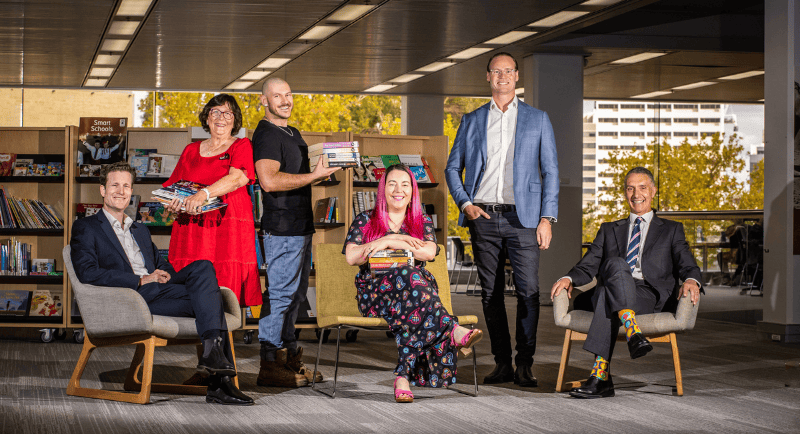
$50,000 up for grabs as The Best Australian Yarn returns, sponsored by Seven
The 2024 Best Australian Yarn competition in partnership with Seven West Media is now underway, giving published and amateur writers the chance to share in an $80,000 prize pool across eight categories, with $50,000 going to the overall winner.
Education provider Navitas has again partnered with Seven to sponsor the competition, which has attracted more than 10,000 submissions since its inception in 2022.
Seven West Media’s new national platform The Nightly is a supporting partner, together with the WA branch of the Children’s Book Council of Australia, Writing WA, the Department of Premier and Cabinet of WA, Department of Planning, Lands and Heritage of WA, and the Perth Comic Arts Festival.
For the first time, prizes will be awarded for the best Comic Story, both in the general section and in the two youth categories.
Australian romantic fiction writer, Rachael Johns, has joined returning judges Robert Drewe, Terri-ann White, Rachel Bin Salleh, and Holden Sheppard on the Prize Jury.
Indigenous affairs advocate and columnist for Seven West Media, Emma Garlett, returns as the ambassador for the First Nations Storytelling Prize and will be assisted in judging the category by dual Miles Franklin Award-winning author Kim Scott.
Navitas’ chief executive officer, Scott Jones, said: “As a global education provider, we remain committed to offering the best opportunities for our students to grow and succeed every day. Similarly, The Best Australian Yarn provides writers of all ages and backgrounds across Australia with a platform to showcase their creativity and explore their talent as authors and storytellers.”
The Best Australian Yarn is open to all Australians aged 12 and over. Entries must be original, unpublished works of fiction up to 2,500 words long and can cover any genre.
Entries for The Best Australian Yarn are now open and close on Monday 12 August 2024.
The winners will be announced at a live-streamed awards night on Friday 22 November 2024 at The State Library of Western Australia.
Top image: Anthony De Ceglie, Kris Williams, Holden Sheppard, Rachael Johns, Scott Jones, Dr Tony Buti

TV Report 5 May 2024: LEGO Masters' Dianne and Shane inspire Brickman with Joker build
TV Report 5 May 2024:
Nine TV Report
LEGO Masters: Australia vs The World
Nine’s evening began with the tenth episode of LEGO Masters.
The LEGO Masters were challenged to create iconic vehicles for some of Batman’s greatest foes to earn a spot in the Semi-Finals.
Dianne and Shane’s build, a chattering teeth vehicle inspired by the Joker, impressed Brickman the most and earned them the win.
NRL – Dragons v Sharks
The Dragons v Sharks game on Nine saw the Sharks dominate, winning the game 20-10 at Shark Park.
Seven TV Report
Farmer Wants a Wife
On Seven, Farmer Wants A Wife saw Farmer Todd set out on his journey to real love, before joining other farmers and ladies for a weekend of camping under the stars.
Jumping headfirst into speed dates – with some guidance from the original four farmers – Todd invited Daisy, Ellen, Grace, Iyesha and Jacinta to his farm.
Anxiously waiting for their farmers on the camping site, the ladies from other farms heaved a sigh of relief when co-host Nat Gruzlewski introduced Farmer Todd and his ladies.
“I was stoked it was another farmer, because there was a split second where I thought maybe these girls are coming in and picking who they want to be paired with,” Anna said.
With 24-hour dates at stake, Claire hatched a plan to steal some of Joe’s time: “I saw the bathtub near our tent, so yeah, I just wanted to set up a little spot for us to share some time together. It’s obviously very out of my comfort zone,” she said, leaving Farmer Joe pleasantly surprised.
As the evening progressed, Calya started to realise the differences between Farmer Joe’s lifestyle and her own. Confessing to Krissy from Tom’s farm, Calya said she didn’t see herself living full-time on the farm in the next five years.
7NEWS Spotlight
The program looked into Social Scammers using celebrity faces to scam over 600,000 Australians every year.
10 TV Report
The Sunday Project
The Sunday Project looked into the Government vowing to wipe $3 billion in HECS debt, Madonna’s concert for 1.5 million people and spoke to Sam Fischer.
MasterChef Australia
On 10’s MasterChef Australia, Andy’s mum Maree was in the kitchen to set an elimination challenge inspired by some of the Allen household’s classic retro dishes. Contestants had to make them MasterChef worthy to avoid being sent home.
ABC
Call the Midwife
The maternity home was thrown into chaos by an outbreak of gastroenteritis, and Nurse Crane fights to save her career.
SBS
Invasion: The Normans
Invasion looked into how an exiled Irish king persuaded the Anglo-Norman lord Strongbow to help him recover his kingdom.
Business of Media
Meta ranks criminals ahead of journalists: Assistant Treasurer Stephen Jones
The Labor government is awaiting advice from The Australian Competition & Consumer Commission and Treasury as to whether it can, or should, designate Meta – the parent company of Facebook, Instagram and WhatsApp – under the news media bargaining code, and thus force the US-based giant to negotiate payments to Australian news publishers for the right to use their content.
‘News on Facebook is dead’: memes replace Australian media posts as Meta turns off the tap
Meta has argued that news makes up just 3% of what people engage with on its services.
An analysis by Guardian Australia has determined that this appears to be by design, with Meta turning off the tap for news in the past few years.
Ad giant Dentsu’s epic losses no big deal for Japanese parent
ASIC filings are a rough guide at best, but 2022 was clearly a tough year for Dentsu and its then 1097-strong team. Dentsu controls $1.2 billion worth of advertising in Australia, and runs ads for Woolworths, Medibank and The Lottery Corporation. Its performance hits the wider media landscape.
News Brands
Stokes lieutenant Anthony De Ceglie wants a ‘unified voice’ at Seven
De Ceglie says he doesn’t do drugs. In that, he is like his new chief executive, Jeff Howard, who took over the ASX-listed media company last month and volunteered to Seven’s nearly 1000 journalists in an all-staff memo that he is a disciple of “call me boring” clean living – no cigarettes, coffee or illicit substances.
Israel orders Al Jazeera to close local offices, escalating Netanyahu’s long-running feud with news network
The extraordinary order — which includes confiscating broadcast equipment, preventing the broadcast of the channel’s reports and blocking its websites — is believed to be the first time Israel has ever shuttered a foreign news outlet.
Radio
Television
Feelgood story turns bad as Sky humiliates Indigenous teenager who caught $1m barramundi
“The whole family was shocked – they’re all proud of me,” he told the ABC. “We’re from Katherine, Mum’s from Kakadu.
But one live interview, on Sky News Australia, turned into a humiliating experience for the Indigenous teenager when the host, Peter Stefanovic, asked him a question about an incident he was involved in when he was 16.
The Masked Singer hangs in the balance for 2024
TV Tonight understands producers Warner Bros TV have been gauging interest from rival networks.
The guessing game singing show is understood to carry a very high price tag and while networks are under pressure from a tough ad market, at just over two hours of TV a week, its future looks unclear. By comparison other expensive formats allow for multiple stripped nights.
